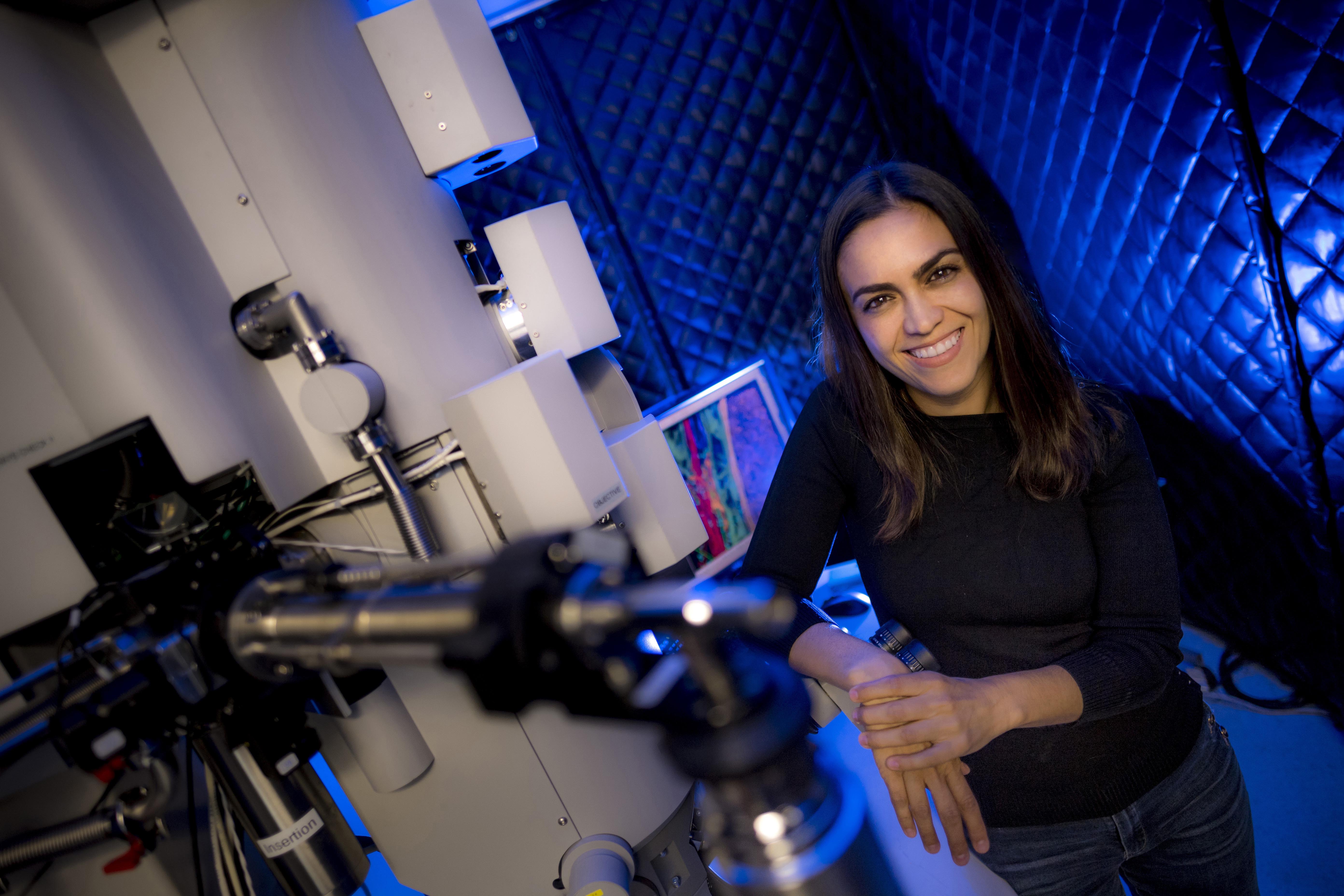Elizabeth Villa Selected as 2021 HHMI Investigator
Biophysicist to receive nearly $9 million to advance the ‘resolution revolution’ in cell biology
By:
- Mario Aguilera
- Howard Hughes Medical Institute
Media Contact:
- Mario Aguilera - maguilera@ucsd.edu
Published Date
By:
- Mario Aguilera
- Howard Hughes Medical Institute
Share This:
Article Content
UC San Diego Division of Biological Sciences Associate Professor Elizabeth Villa has been selected as a 2021 Howard Hughes Medical Institute (HHMI) Investigator.
As one of 33 scientists representing 21 institutions chosen out of pool of more than 800 candidates, Villa will receive approximately $9 million over a seven-year HHMI Investigator term, which is renewable pending a scientific review.
A biophysicist who develops novel visualization techniques to explore the inner mechanisms of cells, Villa’s investigations include deciphering the structure and function of the protein known as leucine-rich repeat kinase 2, or LRRK2, which is the main genetic driver of Parkinson’s disease (see Villa’s profile below).
Villa and her fellow 2021 Investigators were selected for their potential to radically change how we think about biology, human health and disease. HHMI will invest at least $300 million in these new Investigators, who will join HHMI’s Investigator community, which currently includes approximately 250 scientists.
“HHMI is committed to giving outstanding biomedical scientists the time, resources and freedom they need to explore uncharted scientific territory,” says HHMI President Erin O’Shea. By employing scientists as HHMI Investigators, rather than awarding them research grants, she says, the Institute is guided by the principle of “people, not projects.”
HHMI selected the new Investigators because they’re thoughtful, rigorous scientists who have the potential to make transformative discoveries over time, says David Clapham, HHMI’s vice president and chief scientific officer. “We encourage Investigators to follow new directions, learn new methods, and think in new ways,” he says. “This could lead to scientific breakthroughs that benefit humanity.”
To date, 32 current or former HHMI scientists have won the Nobel Prize—most recently, Jennifer Doudna in 2020 for the development of a method for genome editing. Investigators have made significant contributions across many research areas, including HIV vaccine development, microbiome and circadian rhythm research, immunotherapy, SARS-CoV-2 biology and potential therapies and vaccines for COVID-19, among other fields.
See the full list of 2021 HHMI Investigators here.

Erik Jepsen/UC San Diego
HHMI Investigator Profile: Elizabeth Villa
Associate Professor, Section of Molecular Biology
Division of Biological Sciences, UC San Diego
Elizabeth Villa is in the tool-building business. A biophysicist at the University of California San Diego, Villa develops new techniques to visualize cellular machinery, like the molecules that transport compounds within cells and through their membranes.
Such machinery consists of bulky molecular complexes made up of proteins, carbohydrates, lipids and nucleic acids. Early in Villa’s career, she began building the microscopy and computational tools needed to understand all those parts in action.
“We want to find ways to look at these molecules and their mechanisms in context—inside of cells,” she says.
Villa and her colleagues helped develop a technique called cryo-FIB milling, launching what she calls “the next resolution revolution.” First, researchers use a focused ion beam to blast ultrathin layers off frozen cells. They then take images of the sample from various angles using a transmission electron microscope. Computational tools combine those two-dimensional images into a 3D picture, or tomogram, of cellular structures in their natural environment.
Villa and her team use this technique—and related cryo-electron microscopy and visualization methods—to examine everything from bacterial transport structures to human proteins linked to disease. Her lab recently determined the structure of the human LRRK2 protein, a major driver of Parkinson’s disease. Until now, the protein had eluded scientists’ efforts to study its structure. Now, Villa’s team plans to investigate LRRK2’s function and whether it plays a role in transporting cellular compounds.
She calls this project, and the approach she brings to all her work, “bringing structure to cell biology.”
Villa completed her PhD in biophysics at the University of Illinois at Urbana-Champaign as a Fulbright Fellow. She was a Marie Curie Postdoctoral Fellow in the Max Planck Institute of Biochemistry in Munich. She joined UC San Diego in July 2014. In 2016, she was granted an NIH Director’s New Innovator Award and in 2017 she was named a Pew Scholar.
Share This:
You May Also Like
Stay in the Know
Keep up with all the latest from UC San Diego. Subscribe to the newsletter today.



